Observation Using Ozonesondes
Observation using ozonesondes
The Aerological Observation Division launches ozonesondes suspended from balloons to measure the vertical distribution of atmospheric ozone up to altitudes of round 35 km. Profiles of pressure, temperature, humidity and wind are also observed simultaneously.
Ozonesonde observation is started in principle at 06 UTC (15 JST) on Wednesdays, but may be postponed in the event of inclement weather.
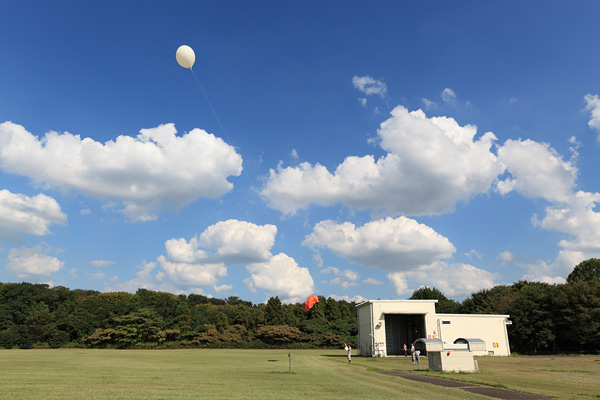
Ozonesonde launch
Ozonesondes
An ozonesonde consists of an ozone measurement unit (including a motor-driven air sampling pump and an ozone sensor) and a GPS radiosonde unit. The ozone sensor measures the electrical current generated by chemical reactions between a solution and ozone sampled from the atmosphere. The GPS radiosonde unit has the same structure as those used for aerological observation.
| Metric | Measurement method |
|---|---|
| Pressure | Calculation using altitude and temperature data |
| Temperature | Thermistor |
| Humidity | Electrical capacity |
| Wind direction | Calculation using GPS data |
| Wind speed | Calculation using GPS data |
| Altitude | Calculation using GPS data |
| Ozone partial pressure | ECC ozone sensor |
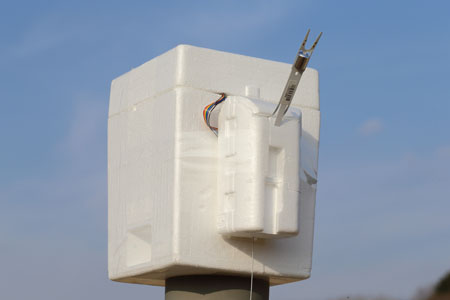
ECC ozonesonde
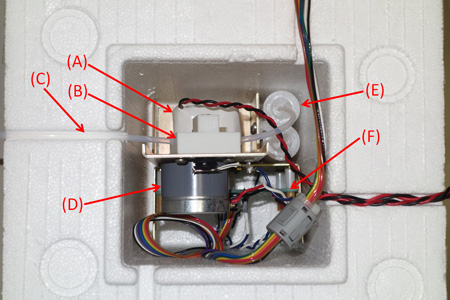
Inside an ECC ozonesonde
(A) battery, (B) pump, (C) air intake tube, (D) motor, (E) sensing cell, (F) interface board
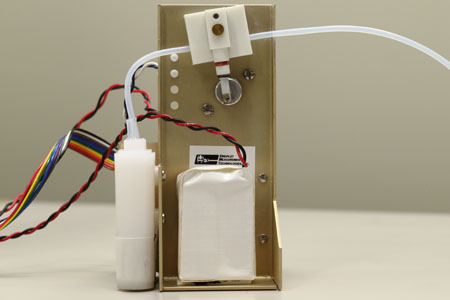
ECC ozone sensor (pump side)
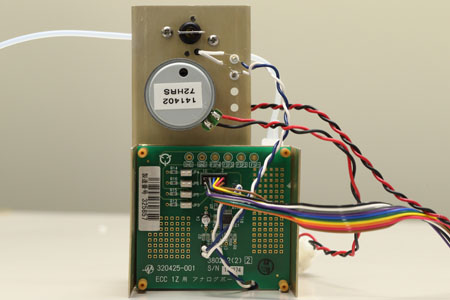
ECC ozone sensor (motor side)
Example
The chart below shows observational results. The vertical axis represents pressure, and the horizontal axis represents observation variables such as ozone partial pressure and temperature.
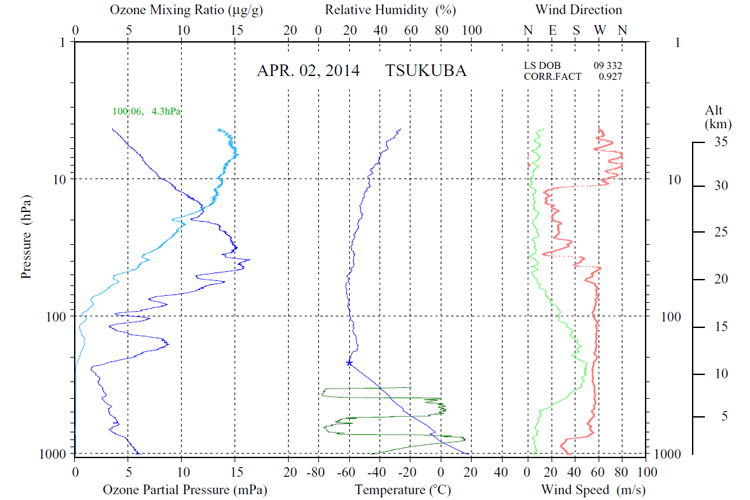
Observational results